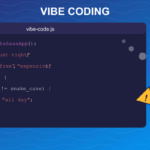While everyone’s debating how AI will replace developers and throwing around unverifiable metrics about “AI writing 70% of our code,” I’m watching something different happen.
We’re not reducing headcount. Instead, as an example, if you had a team of 5 developers before, you now effectively have a team of 10 with AI as pair programmers.
The early mistakes We started thinking AI was a magic bullet. Spoiler: it’s not. Without understanding limitations and proper prompting, you waste more time than you save. Ask me how I know 😅
What actually works We built AI into our workflow as tools, not replacements: • Code review agents that know our guidelines • Real-time guidance (like reminding devs about UI IDs for QA) • Automated checks for coding standards
Key point: we’re not replacing human code reviews. We’re giving developers better tools to catch mistakes first, then having experienced humans review with their system knowledge. We hired our developers for a reason.
The culture piece We reserve engineering meeting time for AI wins/failures sharing. Dedicated Slack channel for discoveries. When team members blog about AI, I let them know I saw it. May have joked about a “race for likes” 🏃♂️
Result? No resistance. Just curiosity and experimentation.
Junior developer elevation Junior devs are elevated by tools that seniors built and refined. They’re exploring, learning faster, contributing more confidently. We’re amplifying experience, not replacing it.
Reality check Most of us aren’t Fortune 500s with millions for custom models. We use Claude Code, Cursor, and tools with latest models from Anthropic/OpenAI/Google. That’s fine.
Bottom line We’re speeding up development to move faster in fast-moving industries, bringing more value to clients – not fewer developers to payroll.
Maybe I’m missing something, but I’d rather use AI as competitive advantage than cost-cutting.
What’s your experience? Always curious what’s working (or not) for other teams.
Not trying for clicks – just sharing what we’ve learned. Our approach might not fit everyone, but hope it encourages thoughtful AI adoption over fear-based decisions.

